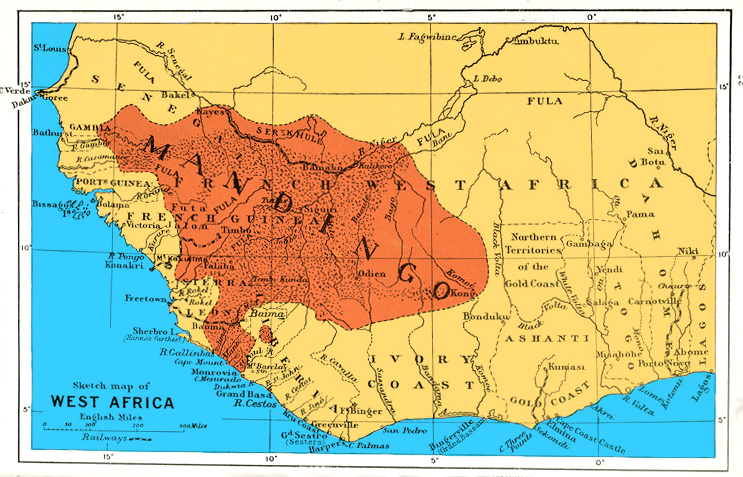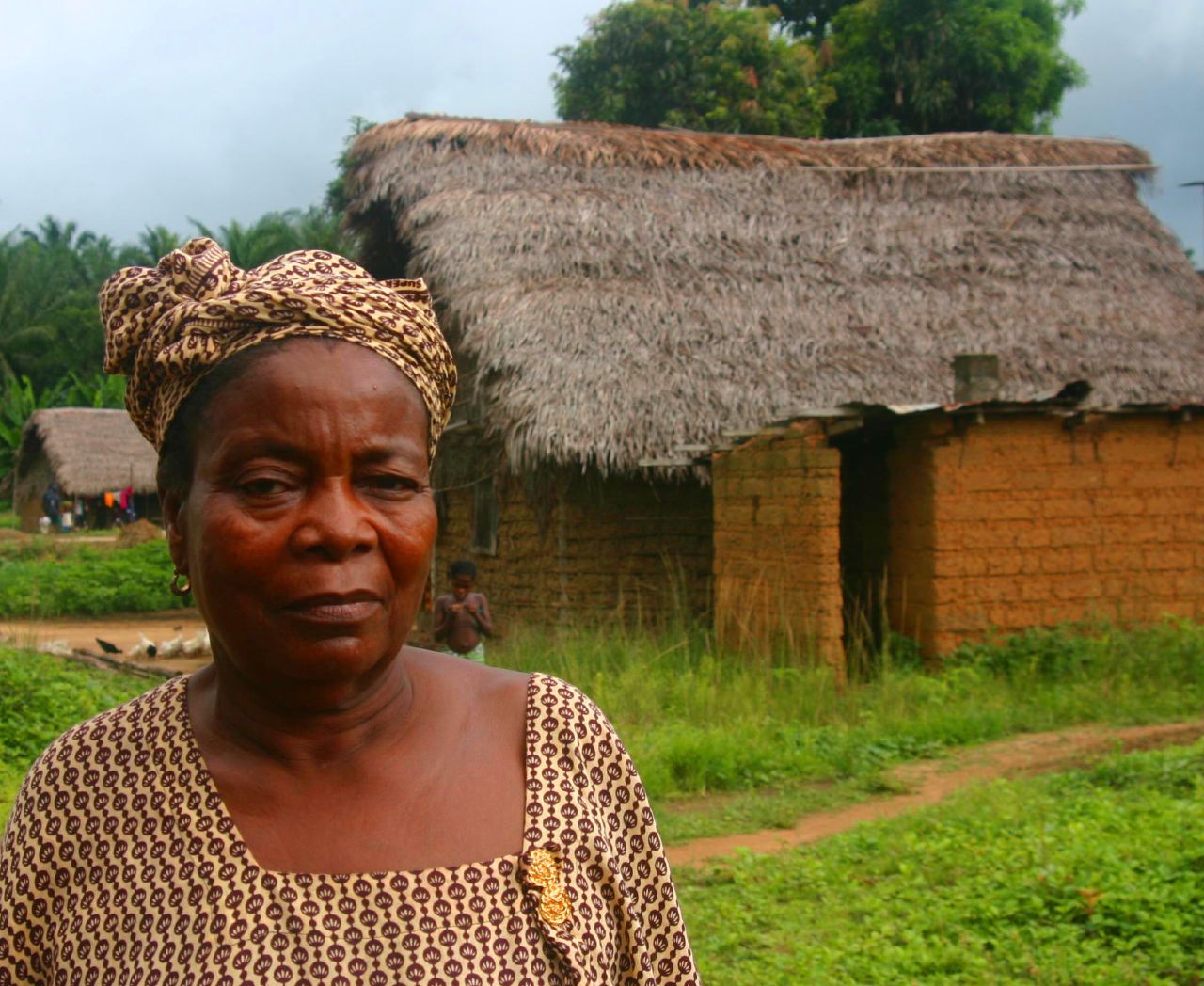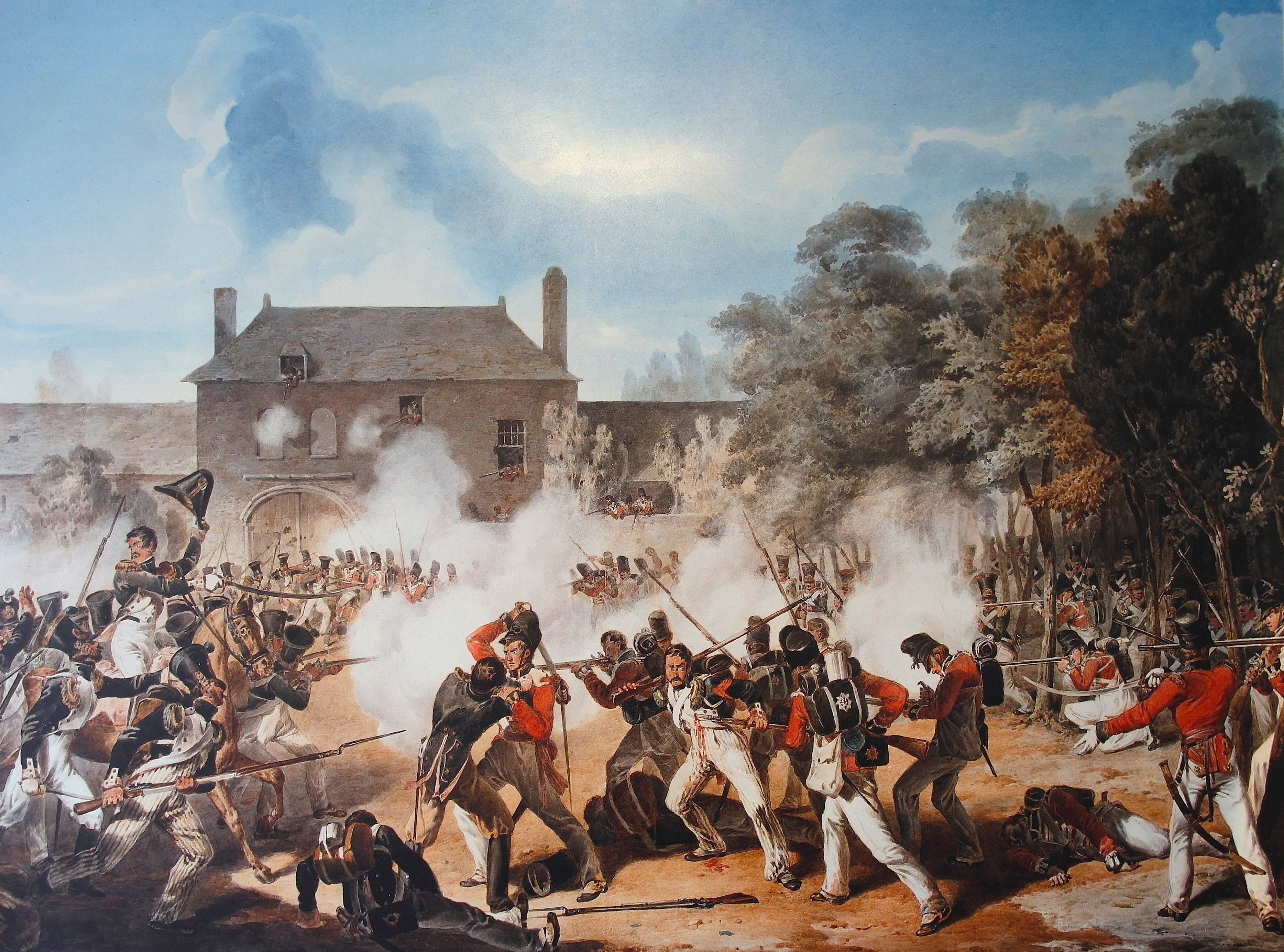|
The Gambia Regiment
The Gambia Regiment was a British Army colonial regiment drawn from the Gambia Colony and Protectorate that existed between 1901 and 1958. Known as the Gambia Company from 1901 to 1939, and from 1945 to 1950, its strength fluctuated from peacetime and wartime, peaking at two battalions during World War II. It saw active service in both world wars, fighting in German colonies in Kamerun and East Africa during the first, and in Burma against the Japanese in the second. It was raised as part of the larger Royal West African Frontier Force, and was part of the 81st (West Africa) Division during its operations in WWII. Early history Throughout 1900 and 1901, the Gambia had experienced an insurgency against British colonial rule, which was eventually suppressed by a military expedition, known as the Gambia Field Force, under Lieutenant Colonel H. E. Brake. It consisted of soldiers from the West India Regiment and the Central Africa Regiment. With the West African Frontier Force ... [...More Info...] [...Related Items...] OR: [Wikipedia] [Google] [Baidu] |
Burma Campaign 1944–45
Myanmar, ; UK pronunciations: US pronunciations incl. . Note: Wikipedia's IPA conventions require indicating /r/ even in British English although only some British English speakers pronounce r at the end of syllables. As John Wells explains, the English spellings of both Myanmar and Burma assume a non-rhotic variety of English, in which the letter r before a consonant or finally serves merely to indicate a long vowel: �mjænmɑː, ˈbɜːmə So the pronunciation of the last syllable of Myanmar as ɑːror of Burma as ɜːrməby some speakers in the UK and most speakers in North America is in fact a spelling pronunciation based on a misunderstanding of non-rhotic spelling conventions. The final ''r'' in ''Myanmar'' was not intended for pronunciation and is there to ensure that the final a is pronounced with the broad ''ah'' () in "father". If the Burmese name my, မြန်မာ, label=none were spelled "Myanma" in English, this would be pronounced at the end by all ... [...More Info...] [...Related Items...] OR: [Wikipedia] [Google] [Baidu] |
West India Regiment
The West India Regiments (WIR) were infantry units of the British Army recruited from and normally stationed in the British colonies of the Caribbean between 1795 and 1927. In 1888 the two West India Regiments then in existence were reduced to a single unit of two battalions. This regiment differed from similar forces raised in other parts of the British Empire in that it formed an integral part of the regular British Army. In 1958 a new regiment was created following the creation of the Federation of the West Indies with the establishment of three battalions, however, the regiment's existence was short-lived and it was disbanded in 1962 when its personnel were used to establish other units in Jamaica and Trinidad and Tobago. Throughout their history, the regiments were involved in a number of campaigns in the West Indies and Africa, and also took part in the First World War, where they served in the Middle East and East Africa. History Origins and early basis of recruitment ... [...More Info...] [...Related Items...] OR: [Wikipedia] [Google] [Baidu] |
Royal Field Artillery
The Royal Field Artillery (RFA) of the British Army provided close artillery support for the infantry. It came into being when created as a distinct arm of the Royal Regiment of Artillery on 1 July 1899, serving alongside the other two arms of the regiment, the Royal Horse Artillery (RHA) and the Royal Garrison Artillery (RGA). It ceased to exist when it was amalgamated with the Royal Garrison Artillery in 1924. The Royal Field Artillery was the largest arm of the artillery. It was responsible for the medium calibre guns and howitzers deployed close to the front line and was reasonably mobile. It was organised into brigades, attached to divisions or higher formations. Notable members *Ernest Wright Alexander, Victoria Cross recipient *Colin Gubbins (1896–1976), prime mover of the Special Operations Executive (SOE) * Dar Lyon (1898–1964). first-class cricketer *Norman Manley (1893–1969), first Premier of Jamaica, serving from 14 August 1959 to 29 April 1962 * D ... [...More Info...] [...Related Items...] OR: [Wikipedia] [Google] [Baidu] |
Bambara People
The Bambara ( bm, ߓߡߊߣߊ߲, italics=no, ''Bamana'' or ''Banmana'') are a Mandé ethnic group native to much of West Africa, primarily southern Mali, Guinea, Burkina Faso and Senegal. They have been associated with the historic Bambara Empire. Today they make up the largest Mandé ethnic group in Mali, with 80% of the population speaking the Bambara language, regardless of ethnicity. Ethnonym According to the ''Encyclopedia of Africa'', "Bambara" means "believer" or "infidel"; the group acquired the name because it resisted Islam after the religion was introduced in 1854 by Tukulor conqueror El Hadj Umar Tall." History The Bamana originated as a royal section of the Mandinka people. They are founders of the Mali Empire in the 13th Century. Both Manding and Bambara are part of the Mandé ethno-linguistic group, whose divergence is dated to at least about 7,000 years ago, and branches of which are associated with sites near Tichitt (now subsumed by the Sahara in sout ... [...More Info...] [...Related Items...] OR: [Wikipedia] [Google] [Baidu] |
Fula People
The Fula, Fulani, or Fulɓe people ( ff, Fulɓe, ; french: Peul, links=no; ha, Fulani or Hilani; pt, Fula, links=no; wo, Pël; bm, Fulaw) are one of the largest ethnic groups in the Sahel and West Africa, widely dispersed across the region. Inhabiting many countries, they live mainly in West Africa and northern parts of Central Africa, South Sudan, Darfur, and regions near the Red Sea coast in Sudan. The approximate number of Fula people is unknown due to clashing definitions regarding Fula ethnicity. Various estimates put the figure between 25 and 40 million people worldwide. A significant proportion of the Fula – a third, or an estimated 12 to 13 million – are pastoralism, pastoralists, and their ethnic group has the largest nomadic pastoral community in the world., Quote: The Fulani form the largest pastoral nomadic group in the world. The Bororo'en are noted for the size of their cattle herds. In addition to fully nomadic groups, however, there are also semisedentary ... [...More Info...] [...Related Items...] OR: [Wikipedia] [Google] [Baidu] |
Jolof Empire
{{dab ...
Jolof (french: Djolof or ') may refer to either of * Jolof Empire, a West African successor state to the Mali Empire in modern Senegal from the 14th to 16th centuries * Kingdom of Jolof, a rump survival of the earlier empire from the 16th to the 19th centuries See also * Jollof rice Jollof (), or jollof rice, is a rice dish from West Africa. The dish is typically made with long-grain rice, tomatoes, onions, spices, vegetables and meat in a single pot, although its ingredients and preparation methods vary across different re ... [...More Info...] [...Related Items...] OR: [Wikipedia] [Google] [Baidu] |
Mandinka People
The Mandinka or Malinke are a West African ethnic group primarily found in southern Mali, the Gambia and eastern Guinea. Numbering about 11 million, they are the largest subgroup of the Mandé peoples and one of the largest ethnic-linguistic groups in Africa. They speak the Manding languages in the Mande language family and a ''lingua franca'' in much of West Africa. Over 99% of Mandinka adhere to Islam. They are predominantly subsistence farmers and live in rural villages. Their largest urban center is Bamako, the capital of Mali. The Mandinka are the descendants of the Mali Empire, which rose to power in the 13th century under the rule of king Sundiata Keita, who founded an empire that would go on to span a large part of West Africa. They migrated west from the Niger River in search of better agricultural lands and more opportunities for conquest. Nowadays, the Mandinka inhabit the West Sudanian savanna region extending from The Gambia and the Casamance region in Senegal to Iv ... [...More Info...] [...Related Items...] OR: [Wikipedia] [Google] [Baidu] |
Worcestershire Regiment
The Worcestershire Regiment was a line infantry regiment in the British Army, formed in 1881 under the Childers Reforms by the amalgamation of the 29th (Worcestershire) Regiment of Foot and the 36th (Herefordshire) Regiment of Foot. The regiment fought in many conflicts, including both the First and Second World Wars, until 1970, when it was amalgamated with the Sherwood Foresters (Nottinghamshire and Derbyshire Regiment) to form the Worcestershire and Sherwood Foresters Regiment (29th/44th Foot). In September 2007, the regiment amalgamated with the Cheshire Regiment and the Staffordshire Regiment (Prince of Wales's) to form the Mercian Regiment. History Early years The regiment was formed in 1881 under the Childers Reforms by the amalgamation of the 29th (Worcestershire) Regiment of Foot and the 36th (Herefordshire) Regiment of Foot. The 1st Battalion was initially deployed to India, while the 2nd Battalion was initially deployed to Ireland, the Channel Islands, Malta, Berm ... [...More Info...] [...Related Items...] OR: [Wikipedia] [Google] [Baidu] |
Manchester Regiment
The Manchester Regiment was a line infantry regiment of the British Army in existence from 1881 until 1958. The regiment was created during the 1881 Childers Reforms by the amalgamation of the 63rd (West Suffolk) Regiment of Foot and the 96th Regiment of Foot as the 1st and 2nd battalions; the 6th Royal Lancashire Militia became the 3rd (Reserve) and 4th (Extra Reserve) battalions and the Volunteer battalions became the 5th, 6th, 7th, 8th, 9th and 10th battalions. After distinguished service in both the First and the Second World Wars, the Manchester Regiment was amalgamated with the King's Regiment (Liverpool) in 1958, to form the King's Regiment (Manchester and Liverpool), which was, in 2006, amalgamated with the King's Own Royal Border Regiment and the Queen's Lancashire Regiment to form the present Duke of Lancaster's Regiment (King's, Lancashire and Border). 1881–1899 Between the 1860s and 1880s, the British Army underwent a period of reform implemented by Edwar ... [...More Info...] [...Related Items...] OR: [Wikipedia] [Google] [Baidu] |
Sierra Leone
Sierra Leone,)]. officially the Republic of Sierra Leone, is a country on the southwest coast of West Africa. It is bordered by Liberia to the southeast and Guinea surrounds the northern half of the nation. Covering a total area of , Sierra Leone has a tropical climate, with diverse environments ranging from savanna to rainforests. The country has a population of 7,092,113 as of the 2015 census. The capital and largest city is Freetown. The country is divided into five administrative regions, which are subdivided into Districts of Sierra Leone, 16 districts. Sierra Leone is a constitutional republic with a unicameral parliament and a directly elected executive president, president serving a five-year term with a maximum of two terms. The current president is Julius Maada Bio. Sierra Leone is a Secular state, secular nation with Constitution of Sierra Leone, the constitution providing for the separation of state and religion and freedom of conscience (which includes freedom of ... [...More Info...] [...Related Items...] OR: [Wikipedia] [Google] [Baidu] |
Mende People
The Mende are one of the two largest ethnic groups in Sierra Leone; their neighbours, the Temne people, constitute the largest ethnic group at 35.5% of the total population, which is slightly larger than the Mende at 31.2%. The Mende are predominantly found in the Southern Province and the Eastern Province. The Mende are mostly farmers and hunters. Some of the major cities with significant Mende populations include Bo, Kenema, Kailahun, and Moyamba. Like a majority of African nations, Sierra Leone's political parties are often tied to specific ethnic groups and have been dominated by the Mende, on the one hand, and the Temne and their long-time political allies, the Limba people (Sierra Leone), Limba, on the other. The Mende are known to typically support the Sierra Leone People's Party (SLPP), while the Temnes and Limbas are associated with the All People's Congress party (APC). History Regional warfare throughout the 19th century led to the capture and sale of many M ... [...More Info...] [...Related Items...] OR: [Wikipedia] [Google] [Baidu] |
Coldstream Guards
The Coldstream Guards is the oldest continuously serving regular regiment in the British Army. As part of the Household Division, one of its principal roles is the protection of the monarchy; due to this, it often participates in state ceremonial occasions. The Regiment has consistently provided formations on deployments around the world and has fought in the majority of the major conflicts in which the British Army has been engaged. The Regiment has been in continuous service and has never been amalgamated. It was formed in 1650 as 'Monck's Regiment of Foot' and was then renamed 'The Lord General's Regiment of Foot Guards' after the restoration in 1660. With Monck's death in 1670 it was again renamed 'The Coldstream Regiment of Foot Guards' after the location in Scotland from which it marched to help restore the monarchy in 1660. Its name was again changed to 'The Coldstream Guards' in 1855 and this is still its present title. Today, the Regiment consists of: Regimental Headq ... [...More Info...] [...Related Items...] OR: [Wikipedia] [Google] [Baidu] |


.jpg)





